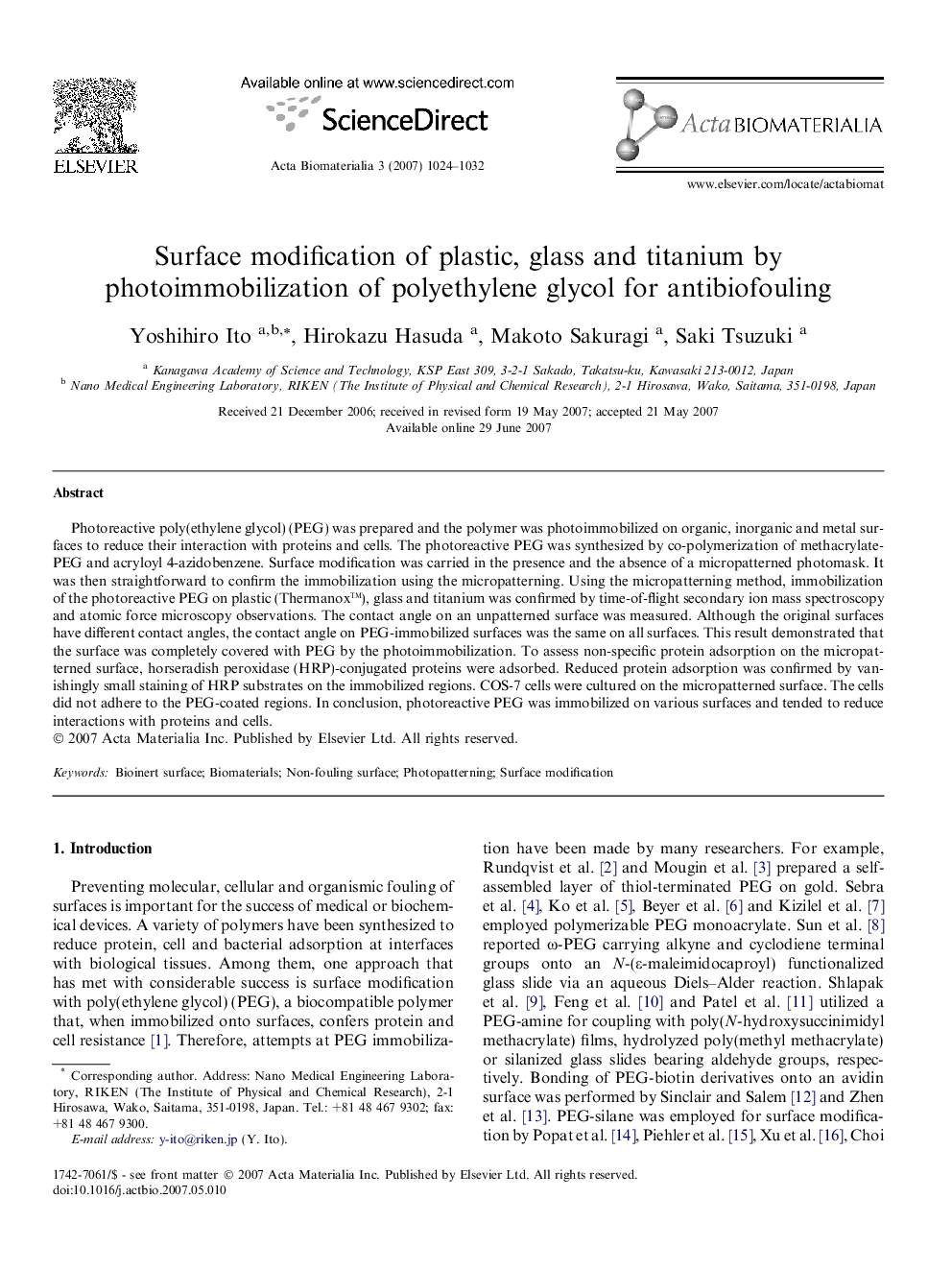| Article ID | Journal | Published Year | Pages | File Type |
|---|---|---|---|---|
| 2487 | Acta Biomaterialia | 2007 | 9 Pages |
Photoreactive poly(ethylene glycol) (PEG) was prepared and the polymer was photoimmobilized on organic, inorganic and metal surfaces to reduce their interaction with proteins and cells. The photoreactive PEG was synthesized by co-polymerization of methacrylate-PEG and acryloyl 4-azidobenzene. Surface modification was carried in the presence and the absence of a micropatterned photomask. It was then straightforward to confirm the immobilization using the micropatterning. Using the micropatterning method, immobilization of the photoreactive PEG on plastic (Thermanox™), glass and titanium was confirmed by time-of-flight secondary ion mass spectroscopy and atomic force microscopy observations. The contact angle on an unpatterned surface was measured. Although the original surfaces have different contact angles, the contact angle on PEG-immobilized surfaces was the same on all surfaces. This result demonstrated that the surface was completely covered with PEG by the photoimmobilization. To assess non-specific protein adsorption on the micropatterned surface, horseradish peroxidase (HRP)-conjugated proteins were adsorbed. Reduced protein adsorption was confirmed by vanishingly small staining of HRP substrates on the immobilized regions. COS-7 cells were cultured on the micropatterned surface. The cells did not adhere to the PEG-coated regions. In conclusion, photoreactive PEG was immobilized on various surfaces and tended to reduce interactions with proteins and cells.
